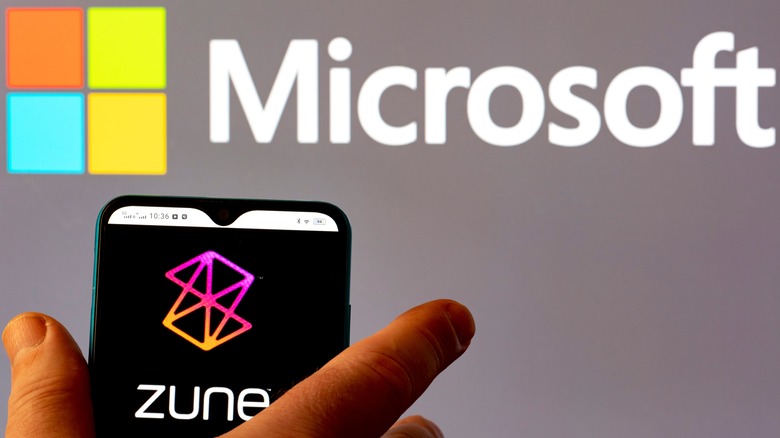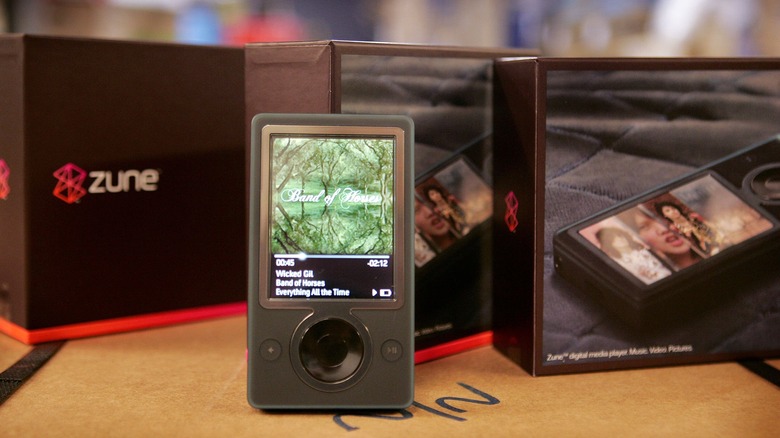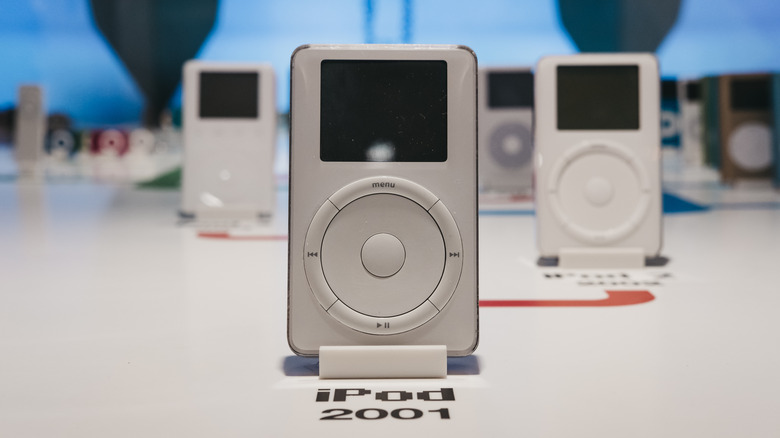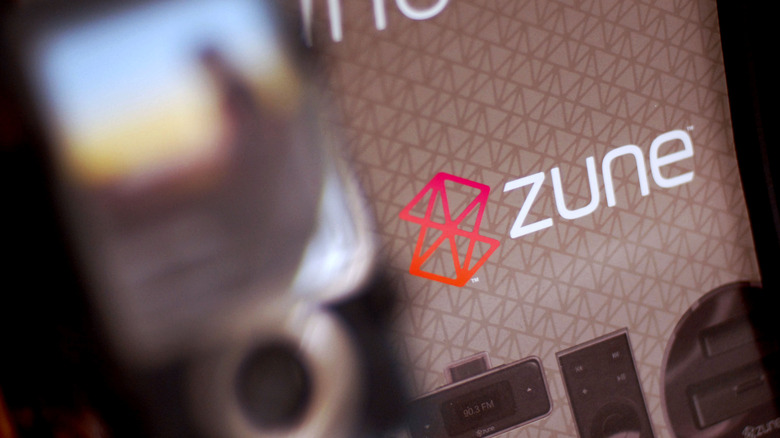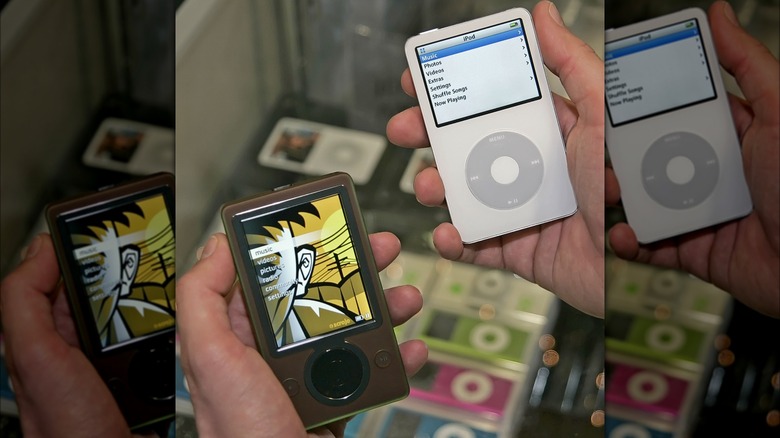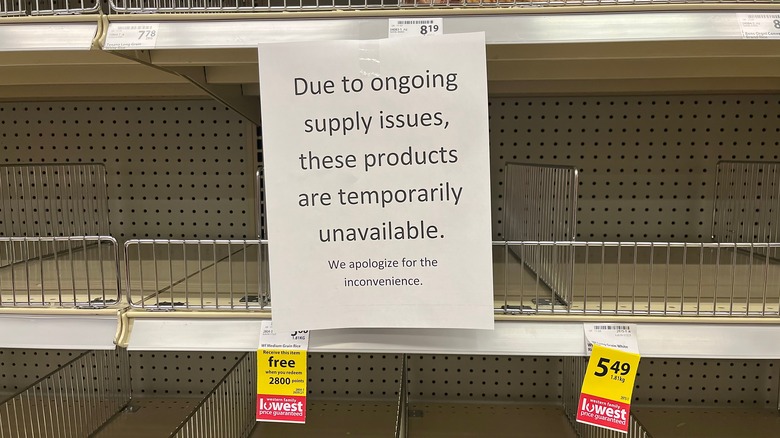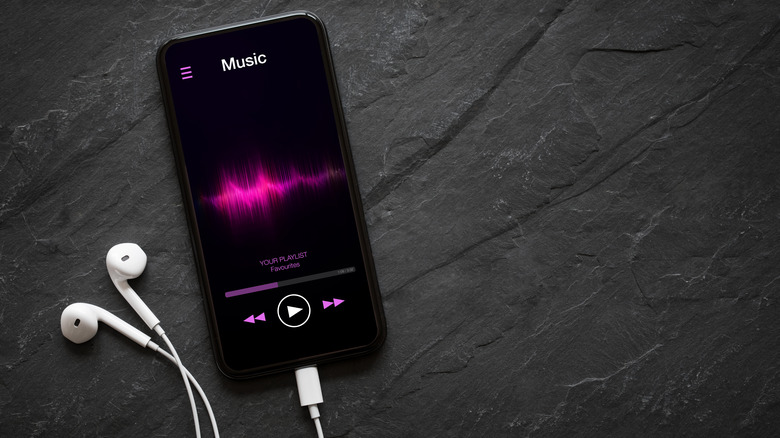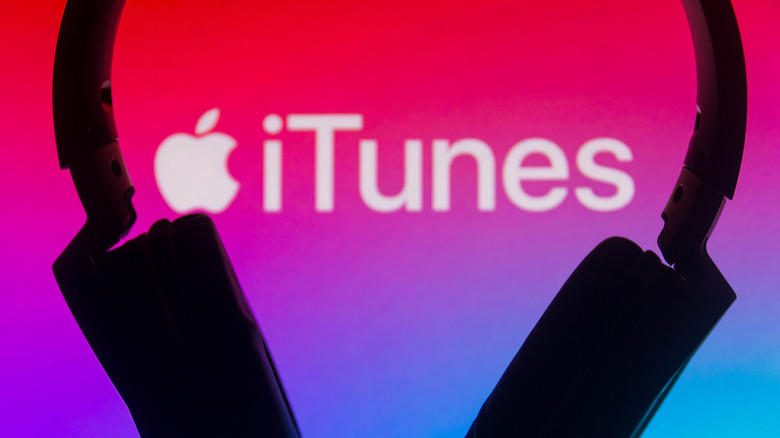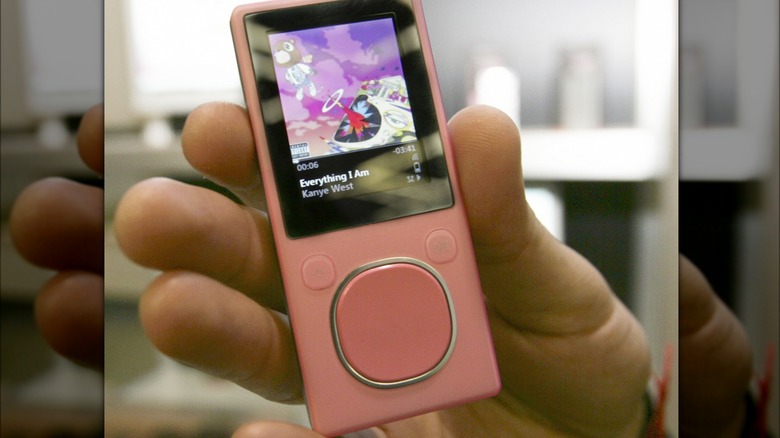10 Reasons Zune Just Couldn't Keep Up With The iPod
Zune made a strong effort to challenge the popularity of the iPod during its time, yet it was more of an individual endeavor by the Zune team rather than a comprehensive Microsoft campaign.
The Microsoft Zune was indeed a great device, featuring a color display, user-friendly controls, and the backing of Microsoft. When evaluated on its own, the Zune had only minor flaws. However, it was released into a market dominated by the iPod, particularly during the portable MP3 player boom of the early 2000s.
It's tricky to pinpoint a single reason for Zune's flop and its enduring status as a distant second to the iPod. It was the result of a multitude of factors involving Microsoft, Apple, and consumer choices. Today, while the Zune has a dedicated cult following and enthusiasts who collect working models, it remains a piece of technology history, akin to pagers and flip phones.
In this article, we delve into 10 reasons Zune just couldn't keep up with the iPod.
Confusing generational releases
The first generation of Zune sounded fantastic on paper. It had a color screen, could hold up to 30 gigabytes of audio and video, and you could even share songs directly with other Zune users, similar to the Apple AirDrop feature. While it had cool features, it was ugly.
Chances are, if you did buy a first-generation Zune it was a gros-brown rectangular box. There were other colors, but the brown was the one that seemed to be available. Compared to the sleek lines of the iPod, many people immediately dismissed the Zune at first glance.
In an attempt to fix the terrible reception with the first generation, Microsoft released their version of the iPod Mini called the Zune 4, and later, 8, and 16, which referred to their storage size in gigabytes. They fixed the color scheme by offering them in black or red, but the red looked more like a muddy brown that still reminded consumers of the brown rectangular original. The smaller Zune's were released alongside their larger counterpart the Zune 80 and 120.
In 2009, the final generation of Zune was released in response to the iPod touch, featuring a more modern design similar to contemporary smartphones. However, Zune struggled overall. Each generation seemed to merely react to Apple's releases, lacking a distinct direction or innovation, leading to its perception as an imitation rather than a groundbreaking product.
Bad timing
There have been numerous format wars over the years, such as laser disc versus DVD, Blu-ray versus HD DVD, and MP3 Players versus Mini Disc Players.
When Microsoft's Zune entered the market, the preference for MP3 players had already been established. Launching the Zune in 2006, after the public had chosen MP3 players, seemed logical on the surface, but it had a significant disadvantage. The iPod, released in 2001, was a major factor in determining the winner of this format war.
By the time of Zune's launch, the iPod had already become the default MP3 player choice, thanks to Apple's effective marketing and lack of strong competitors. Zune thus faced an uphill battle entering a market that the iPod had dominated for five years. The iPod was deeply ingrained in public perception as the top brand and had virtually no competition.
Zune's late entry meant it needed exceptional features and performance to win over the market. However, it fell short of making a significant impact. Had Zune been released earlier, its shortcomings might have been more easily forgiven, and it could have grown as a competitor or alternative to the iPod. However, Apple had a five-year head start with continuous improvements and marketing efforts, making it challenging for Zune to disrupt the already established market.
Innovation in the wrong places
Zune had several features that the iPod simply didn't have. By all accounts, the Zune was a great device, and in an alternate universe, there may be millions of people with the hypothetical Zune Phone 15 in their pocket.
However, the innovations that went into the phone were things that people didn't really want or need yet. One of the most unique features was "squirting". This feature allowed users to share songs and media from device to device directly. Imagine your 2006 self hanging out with friends and sharing a song with a click of a button instead of banging your heads together to share earbuds.
The "squirting" feature relies on users having a Zune device, while the name "squirting" combined with the brown color didn't help the popularity of the device. The feature became pointless pretty quickly when the Zune peaked in popularity.
There were also a few features such as AM/FM radio that were included which admittedly were nice to have, but again, ultimately unnecessary.
The rest of their development time went towards modeling their devices after iPods and fixing their original design flaws. The entire strategy of playing catch up without adding anything revolutionary to the MP3 marketplace was ultimately doomed to fail.
Design choices
The Zune's first iterations were highly criticized for design and color choice. These were corrected in the following generations, but by then, the Zune was already being lapped by the iPod.
Before the word "memes" bore its name, Zune was the joke of the portable music industry world for its design choices. Even to this day, when Zunes are brought up, images of a gross brown device are the lasting legacy of the Zune. The brown was similar to old wooden electronics when TVs came encased in wood. It was just an odd choice that failed to resonate.
When Microsoft decided to offer more colors, the company went with a reddish-brown reminiscent of the original design that still didn't pop. Compared to the rainbow-colored iPod Nanos released at the same time, Zunes just looked dull.
The rectangular shape of the device was fine and was relatively small. However, this was a time when thinner electronics were in vogue. The Motorola Razr was still extremely popular at the time when consumers wanted their electronics thinner and smaller. The Zune bucked this trend, but compared to the flat iPod, iPod Nano, and the iPod Shuffle, they looked like bricks.
Insufficient and ineffective marketing
In 2006, Apple was just beginning to establish its reputation for effective marketing, while Microsoft's Zune entered the market with sporadic advertising that didn't effectively highlight the device's strengths. Zune's commercials were avant-garde art pieces, leaving a confusing message about its target audience, and overly appealing to artists rather than the average listener.
Apple, meanwhile, utilized simple and monochromatic ads that conveyed a trendy and accessible brand image, helping to maintain its dominance in the market. Apple's marketing focused on creating a product that everyone needed while Zune's ads simply tried to show that they were trendier than iPod. With so much of Apple's strategy in marketing, Zune simply didn't convince anyone.
A significant factor in this disparity was that Zune was just a small segment of Microsoft's broader product line. Microsoft managed numerous projects, and seemed to view Zune primarily as a means to capture a share of Apple's market, rather than as a foundation for a lasting product line. Apple integrated their products with everything it does, and focused heavily on marketing, while the Zune team didn't have the support of the entire company behind them. A single subsidiary branch of Microsoft simply couldn't bring down the entirety of Apple by itself.
Limited availability
When Apple's first iPod was released in 2001, it was available worldwide, garnering significant sales of 125,000 units in its first quarter. These were impressive figures for a brand-new product, especially one that consumers may not have known they needed. Over the years, Apple maintained this momentum, consistently recording high sales and continuously improving the music player, releasing updated versions of the iPod each year. The company offered consumers a variety of choices within the iPod product line, including the introduction of more affordable models like the iPod Nano and Shuffle variants.
In stark contrast to Apple's success, Microsoft Zune's initial release was confined to the United States with limited marketing, significantly hampering its sales and popularity. This singular market focus for the Zune's release severely limited its reach compared to the globally available iPod. Meanwhile, users all around the world were still clamoring for the latest iPod during each subsequent generational release.
WMA vs. MP3
The Zune's default file format was WMA (Windows Media Audio), while the iPod primarily used MP3. The prevalent use of MP3 across various portable digital audio players, often collectively referred to as MP3 players, indicates the file format's dominance.
Microsoft's choice to default to WMA for the Zune posed several challenges. Despite Microsoft's claims of superior sound quality and compression in WMA compared to MP3, most listeners either couldn't tell the difference or didn't care. As device storage capacities grew, with later iPod models holding up to 10,000 songs, the benefit of smaller file sizes became less significant.
Additionally, compatibility issues arose. While Apple has recently been known for software incompatibility with PCs and Microsoft products, the iPod was quite the opposite, widely supporting the popular MP3 format. This allowed for broader sharing options. In contrast, WMA was restricted to Microsoft products and was generally unpopular due to its DRM (Digital Rights Management) restrictions. This made it impossible to share music across different devices, especially if DRM was encoded in the file.
iTunes vs. Zune Marketplace
iTunes was recognized for its user-friendly interface and functionality, offering a more polished experience compared to Microsoft's Zune software. The shift from CDs to digital music was driven by the convenience of accessing desired music more easily and affordably. Users appreciated the ability to buy individual songs, reducing costs compared to full album purchases.
During the early 2000s, music was typically bought directly from MP3 player marketplaces. iTunes outperformed the Zune marketplace for several reasons, including its integration with the Apple ID, allowing seamless access across all Apple devices. In contrast, Zune's integration was less straightforward, often requiring additional downloads and software. While this software was free, it wasn't automatically pre-installed on every PC.
iTunes simplified the music purchasing process by allowing direct credit card payments or using gift cards to add money to accounts. Conversely, Zune Marketplace employed a different, more complex system. Instead of straightforward currency transactions, it used Zune Points, akin to microtransactions. This system was confusing as the conversion rate wasn't transparent, approximately 80 points to the dollar, making it hard for users to gauge the real cost of purchases. Users often ended up with leftover points that couldn't be utilized effectively.
This complexity, though meant as a marketing strategy to encourage more purchases, ultimately backfired, causing user frustration while contributing to a preference for iTunes over Zune.
iPhones & smartphones
With the advent of the iPhone and the rise of smartphones, the Zune's fate was sealed, relegating it to just a footnote in technology history. Released in 2007, the first iPhone not only marked Apple's triumph in the MP3 player market but also signaled the beginning of the modern smartphone era. This development turned out to be the final blow to the Zune brand.
The convergence of phones and MP3 players had already begun with the iPod Touch. It was more than an MP3 player; it could run apps and even function as a rudimentary phone with VOIP calling capabilities. The Zune couldn't keep pace with the iPod Touch's multifunctional apps and capabilities. With the launch of the iPhone, MP3 players, including traditional flip phones, quickly became outdated.
Today's smartphones easily double as MP3 players, eliminating the need for separate music devices. This shift led to the eventual phase-out of all MP3 devices, not just the Zune, as the focus shifted to the development and popularization of smartphones.
Lack of third-party support
The availability of third-party accessories and software for the Zune was significantly less compared to the iPod. The extent of accessories often reflects a product's popularity. During the early 2000s, if you visited a mall, you would likely find kiosks brimming with various iPod accessories like colorful covers, docking stations, and a multitude of other add-ons, many of which weren't officially licensed by Apple.
These wide-ranging accessory options helped offset the iPod's higher price, allowing users to economize by choosing less expensive third-party accessories while still enjoying a high-quality MP3 player. On the other hand, Zune had its share of accessories, but third-party designers and product makers were largely concentrated on iPods due to their greater popularity and larger market share. This focus on iPods by third-party shops essentially provided free marketing for the iPod, further overshadowing the Zune.
Moreover, when the iPod Touch was released, it captured the attention of a large number of programmers, drawing them towards app development for the iPod ecosystem.
